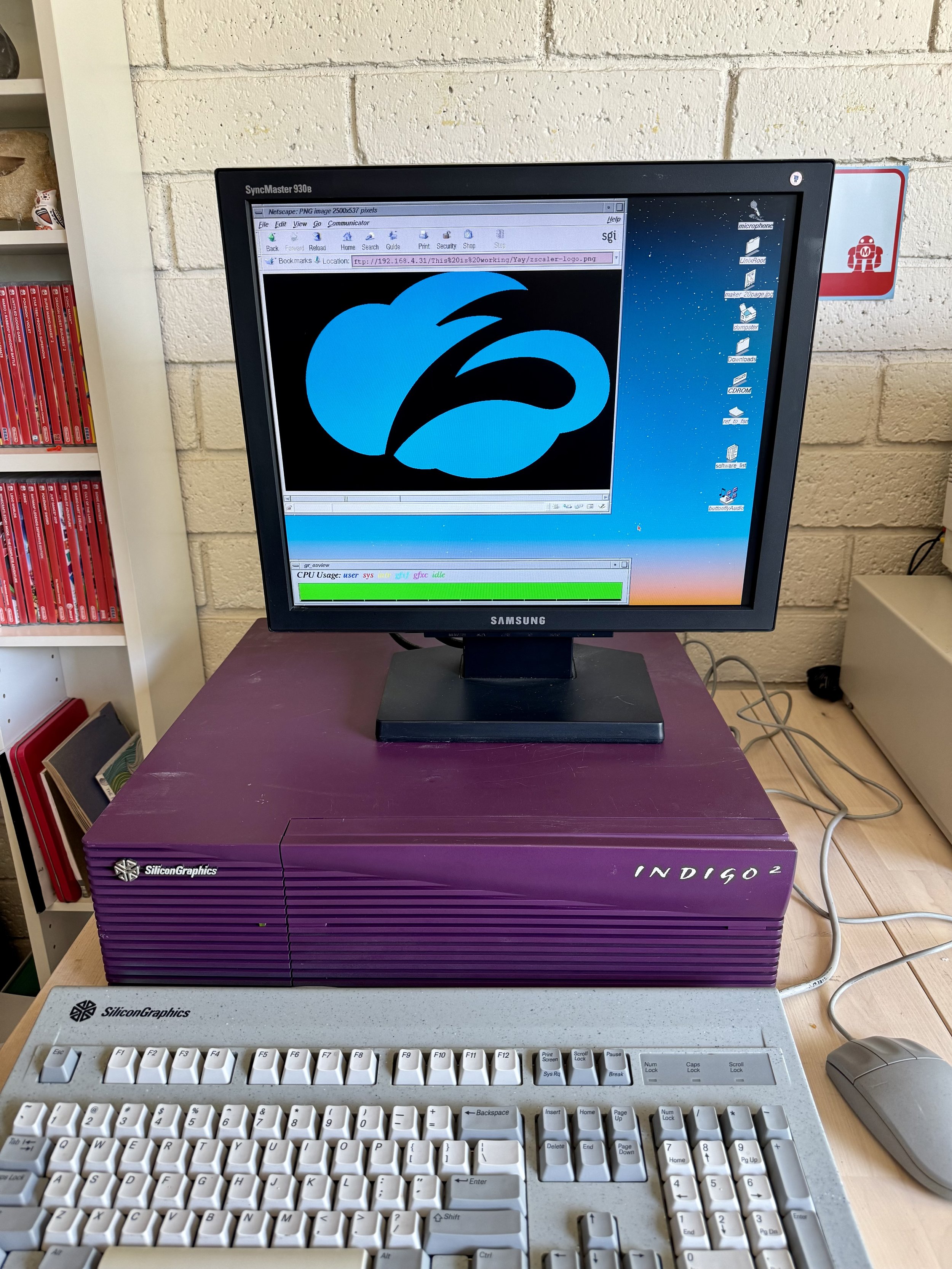SGI Indigo2
For today’s entry in my “Zscaler Logo on a Weird, Old or Obsolete Device” series, I wanted to showcase one of the most fascinating computers in my collection: the mighty SGI Indigo2!
Silicon Graphics Inc. (or “SGI”) was for many years the dominant vendor of bleeding-edge 3D graphics hardware and software. Unlike more consumer-oriented platforms like Apple’s Macintosh or Commodore’s Amiga, SGI’s systems were professional-grade Unix-based workstations for the most demanding use-cases of the era.
My Indigo2 system has an interesting history of its own. It was originally purchased around 1995 by the Massachusetts Institute of Technology (MIT), who used it to administer their campus network. It was then sold to the Los Alamos National Laboratories in New Mexico, where it was used in nuclear research, before I bought it at a surplus sale when I was living in Albuquerque back in 2006.
My Indigo2 is a cutting-edge desktop machine for its time. It has a MIPS R10000 CPU running at 195MHz, 256MB of high-speed RAM, and a 2GB SCSI hard drive. Furthermore, this machine has a “High IMPACT” graphics array capable of doing realtime rendering of 3D models with texture-mapped surfaces and zillions of polygons. In other words, this is an extremely powerful system in the mid-1990’s. Of course, powerful hardware is nothing without powerful software, and so SGI equipped these machines with their Unix-based “IRIX” operating system. I’m no Unix guru, but I know what I like, and I love IRIX - it’s beautiful, intuitive, extremely stable, and it still feels really pleasant to use all these decades later.
I don’t have precise documentation to verify this detail, but the researcher who used the machine at Los Alamos Labs later told me that he believed that this machine was purchased by MIT for around $80,000 - a then-reasonable price for such incredible performance in a small desktop workstation. I think I paid about $100 for it, or roughly 1/800th of its original sale price!
The most widely-known use of SGI systems was in creating the photorealistic animated graphics in many popular movies, TV shows and commercials of the 1980’s through early 2000’s. For example, SGI machines were used to create the stunningly-lifelike (and utterly terrifying to 11-year-old Huxley) dinosaurs in the film “Jurassic Park.” It’s also worth noting that SGI systems weren’t just incredibly powerful, they were also really cool looking - hence their use as onscreen props in the “command center” of Jurassic Park. It was an SGI machine running their experimental 3D file-system navigation app “fsn” which was used in the iconic “It’s a Unix system - I know this!” scene in Jurassic Park. For *eight consecutive years* (1995 through 2002), SGI systems were used on every film that won an Academy Award for special effects - a stunning achievement.
SGI also formed a special relationship with Nintendo in the 1990’s, with the two companies joining forces to develop the hardware and software which eventually became the Nintendo 64 console. In fact, my Indigo2 has several graphics demos on its hard drive (“ButtonFly,” “Ripple,” “Stretch,” etc.) which were later incorporated into Nintendo games like Super Mario 64 - a fact we’re highlighting in our presentation at the Maker Faire this weekend! Happy Friday, everyone!
